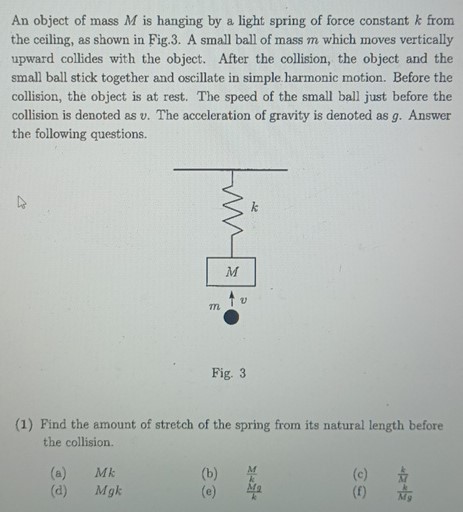An object of mass M is hanging by a light spring of force constant k from the ceiling, as shown in Fig. 3. A small ball of mass m which moves vertically upward collides with the object. After the collision, the object and the small ball stick together and oscillate in simple harmonic motion. Before the collision, the object is at rest. The speed of the small ball just before the collision is denoted as v. The acceleration of gravity is denoted as g. Answer the following questions. Fig. 3 (1) Find the amount of stretch of the spring from its natural length before the collision. (a) Mk (b) M/k (c) k/M (d) Mgk (e) Mg/k (f) k/Mg
